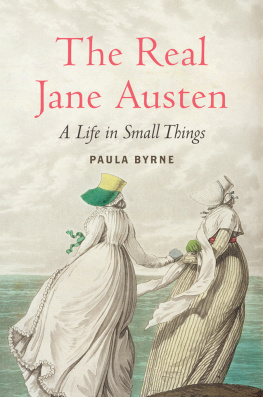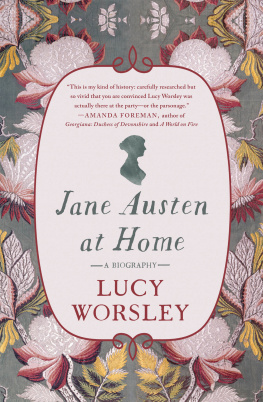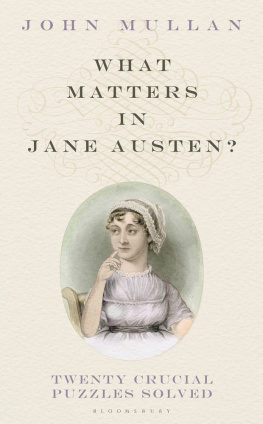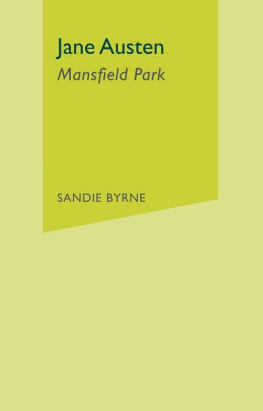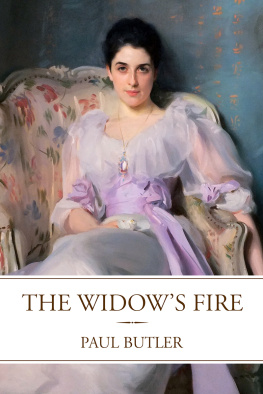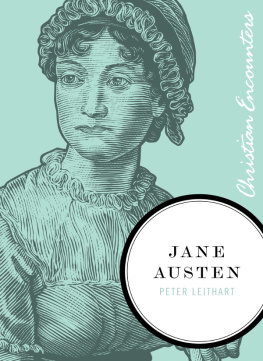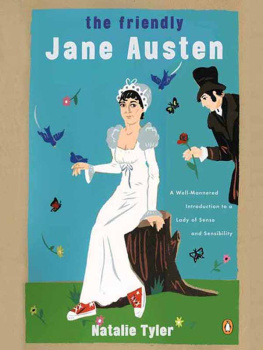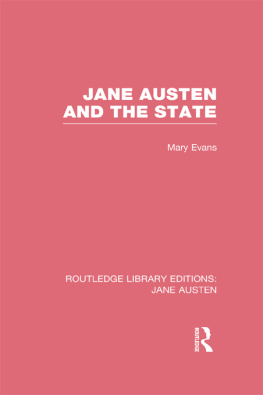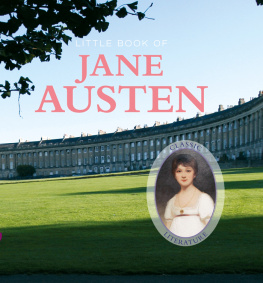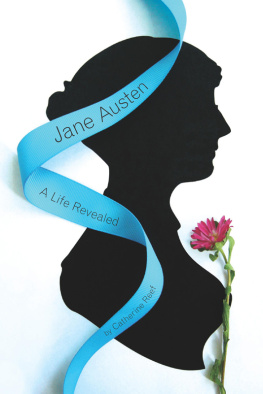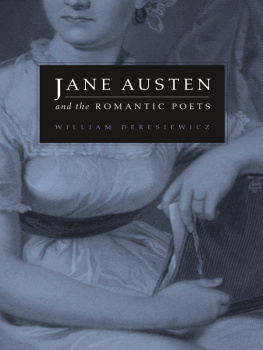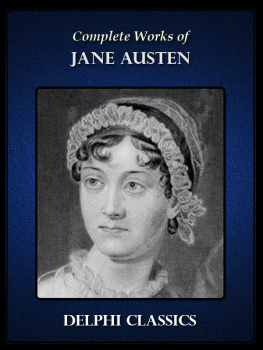Austen Jane - Only a novel; the double life of Jane Austen
Here you can read online Austen Jane - Only a novel; the double life of Jane Austen full text of the book (entire story) in english for free. Download pdf and epub, get meaning, cover and reviews about this ebook. City: Greenwich, Conn, year: 1973, publisher: Endeavour Press;Fawcett Pub, genre: Non-fiction. Description of the work, (preface) as well as reviews are available. Best literature library LitArk.com created for fans of good reading and offers a wide selection of genres:
Romance novel
Science fiction
Adventure
Detective
Science
History
Home and family
Prose
Art
Politics
Computer
Non-fiction
Religion
Business
Children
Humor
Choose a favorite category and find really read worthwhile books. Enjoy immersion in the world of imagination, feel the emotions of the characters or learn something new for yourself, make an fascinating discovery.

- Book:Only a novel; the double life of Jane Austen
- Author:
- Publisher:Endeavour Press;Fawcett Pub
- Genre:
- Year:1973
- City:Greenwich, Conn
- Rating:3 / 5
- Favourites:Add to favourites
- Your mark:
- 60
- 1
- 2
- 3
- 4
- 5
Only a novel; the double life of Jane Austen: summary, description and annotation
We offer to read an annotation, description, summary or preface (depends on what the author of the book "Only a novel; the double life of Jane Austen" wrote himself). If you haven't found the necessary information about the book — write in the comments, we will try to find it.
Only a novel; the double life of Jane Austen — read online for free the complete book (whole text) full work
Below is the text of the book, divided by pages. System saving the place of the last page read, allows you to conveniently read the book "Only a novel; the double life of Jane Austen" online for free, without having to search again every time where you left off. Put a bookmark, and you can go to the page where you finished reading at any time.
Font size:
Interval:
Bookmark:
ONLY A NOVEL
The Double Life of Jane Austen
Jane Aiken Hodge
Copyright Jane Aiken Hodge 1972
The right of Jane Aiken Hodge to be identified as the author of this work has been asserted by her in accordance with the Copyright, Designs and Patents Act, 1988.
First published in the United Kingdom in 1972 by Hodder and Stoughton Ltd.
This edition published in 2014 by Endeavour Press Ltd.
FOR MISS MARY M. LASCELLES
I wish to acknowledge the kindness of the Oxford University Press in allowing extensive quotations from Jane Austens Letters to her sister Cassandra and others , collected and edited by R. W. Chapman.
I have also received much help, advice and encouragement from my husband, Alan Hodge, and from Sir Zachary Cope, Milton Crane, John Murray, W. O. P. Rosedale and B. C. Southam.
J.A.H.
Table of Contents
Introduction
In Jane Austens lifetime, it occurred to no one that she would one day be famous, that future generations would be eager for details of the intensely private life of tother Miss Austen. Burying her, in 1817, in Winchester Cathedral, her grieving family paid due tribute to the benevolence of her heart, the sweetness of her temper, and the extraordinary endowments of her mind, but did not think to mention the six novels that would bring people from all over the world to look at the plain, stone slab that marks her grave.
When Persuasion and Northanger Abbey were published posthumously in 1818, her brother Henry contributed a brief Biographical Notice that is more a laudatory character sketch of the lost, beloved sister than an attempt to give the facts of her life. He sums up his view thus: A life of usefulness, literature and religion, was not by any means a life of event. And he disposes of such events as he cares to notice in under two printed pages.
It was more than fifty years before a fuller attempt was made at a biography, and by then all of Jane Austens own generation were gone, her last brother having died, at a great age, in 1865. The two oldest nieces, Fanny Knatchbull and Anna Lefroy, who might have remembered the Aunt Jane of the Steventon period, were old ladies. The author of the 1870 Memoir , her nephew, James Edward Austen-Leigh, had been only nineteen when she died, so that most of his memories, like those of his sister Caroline Austen, were inevitably of the last years of their aunts life. And when he applied to his older cousin, Lady Knatchbull, for a sight of their aunts letters, most of which had been bequeathed to her by Janes sister Cassandra, he was put off with excuses. The letters were missing. Lady Knatchbull, Jane Austens beloved niece Fanny, was too old and too ill to be troubled about them. Though unfortunate, this is hardly surprising. Jane Austen, writing, years before, both to Fanny herself and to her sister and close confidante Cassandra, had talked freely about Fannys frivolous youth. There had been various young men to be discussed, seriously or otherwise, and one of them, comically described by Jane to Cassandra, had been, in fact, an apothecary. In Regency, and still more, no doubt, in Lady Knatchbulls elegant Victorian circles, apothecaries were not at all the thing. It is no wonder if Fanny Knatchbull, remembering these letters, and others, in which her aunt had advised her over a serious affair with a young gentleman of an Evangelical turn, decided to take the standard Victorian ladys refuge in illness. At all events, the letters were not available to James Edward Austen-Leigh, and his Memoir is the poorer for their lack, though it does include a few that had passed to other members of the family.
To do her justice, Lady Knatchbull kept the letters, and when she died, her son, Lord Brabourne, published them, with a dedication to Queen Victoria and his own explanatory text; but by then it was 1884. When his Letters of Jane Austen came out, she had been dead sixty-seven years. Lord Brabourne himself was two generations away from his subject, and, still more important, he had lost touch with the Hampshire branch of the family, to which his great-aunt had belonged. For the Austens, like their most illustrious member, had a kind of double life. Lord Brabournes grandfather, Jane Austens brother Edward, had been adopted by rich relations in Kent and had finally taken their family name of Knight, while James Edward, son of her brother James and author of the Memoir , remained in Hampshire, inherited money and an extra name from the distaff side, and so became Austen-Leigh. It was members of his family, W. and R. A. Austen-Leigh, who finally published, in 1913, the Life and Letters of Jane Austen, which sums up family records and tradition. Another invaluable source book is the Austen Papers , 1704 - 1856 , edited by R. A. Austen-Leigh, which appeared in 1942, and is a perfect goldmine of miscellaneous family letters and documents.
But the dates of these books show how far they are removed from their subject, and there are, in fact, great gaps in the story they tell. This is because it is largely based on Jane Austens own surviving letters, the best source of all for her life, and they were ruthlessly pruned by Cassandra before her own death. In My Aunt Jane Austen , A Memoir , Caroline Craven Austen records that Cassandra looked them over and burnt the greater part (as she told me), two or three years before her own death ... of those that I have seen, several had portions cut out. And, again, in Personal Aspects of Jane Austen , Mary Augusta Austen-Leigh tells us that Cassandra, who shared her sisters strong sense of privacy, saved only such of the letters as she thought to contain nothing sufficiently interesting to induce any future generation to give them to the world. In fact, the gaps in the letters can be expected to correspond with crises in their authors life, or in her familys. Cassandras hand was a heavy one. We can only respect, and regret it.
What remains is suggestive of Jane Austens own description, in Sanditon , of a sea mist and something white and womanish just visible through it. Ever since the Memoir was published, people have been peering through the mist. Relatives and connections have added a fact or conjecture here, an anecdote there; contemporary sources have been combed for comment and criticism. As the Austen cult grew, devotees pursued dear Aunt Jane from place to place, happily discovering here a ballroom where she probably danced, there a double hedgerow that may have inspired her. It does not add up to very much.
The familys devoted, if belated, recollections give us a kind of framework of a life, but they tend to paint a character at once too good to be true and far too good to have written either the six brilliant novels or the equally surprising letters. I have no doubt that this is largely Jane Austens own fault. She played, supremely well, the part that was expected of her. She was dear Aunt Jane, beloved of children, who never said a sharp thing. Or hardly ever. There are sharp things in her letters, and there must have been in her conversation, but Cassandra burned many of the letters, and the family preferred to forget the conversation. In her lifetime, Jane Austen did her best to conform to the conventions of her day, and after her death the family touched up the picture. Somehow, in their devotion, they succeeded in superimposing their legendary dear aunt on the other figure of Miss Jane Austen, the author. One must always distinguish between these two ladies. Dear Aunt Jane seldom said an unkind thing. She nursed the sick, looked after the children, gave way to her brothers convenience. She was, rightly, a beloved aunt and sister. One is not quite so sure how she stood as a daughter.
But Miss Jane Austen, who commenced as an author at about twelve years old, was something very different. What depths of intellectual and moral despair must she have plumbed before she achieved the extraordinary ironic moral vision that has been compared, with justice, to Chaucers? No use going to her familys records for evidence or clues about this. They will simply tell us that Aunt Jane played the piano before breakfast and rather easy tunes at that. While she sat there, every inch the maiden aunt, she was doubtless wrestling, like every other artist who has created something that endures, with her vision of the universe. It was a fortunate thing for her family that the highly polished surface of the six novels, their sheer artistry, concealing tension, makes it easy to miss the depth and bitterness of what they are often saying.
Next pageFont size:
Interval:
Bookmark:
Similar books «Only a novel; the double life of Jane Austen»
Look at similar books to Only a novel; the double life of Jane Austen. We have selected literature similar in name and meaning in the hope of providing readers with more options to find new, interesting, not yet read works.
Discussion, reviews of the book Only a novel; the double life of Jane Austen and just readers' own opinions. Leave your comments, write what you think about the work, its meaning or the main characters. Specify what exactly you liked and what you didn't like, and why you think so.


